Komentáře / Otázky (39)
![]() Jacinthe napsala:
Jacinthe napsala:
Bonjour je ne comprends pas de quelle couleur faire la jeter A1 patron Dalvik
28.06.2025 - 01:37Odpověď DROPS Design :
Bonjour Jacinthe, faites le jeté avec la couleur principale du rang (tour) de A.1 que vous tricotez, ainsi, au début, vous faites les jetés avec la couleur de la rayure, puis vers la fin de A.1, faites le jeté de A.1 dans la couleur du fond = en naturel. Et au rang avec la flèche, faites les jetés en gris (couleur du rang avec la flèche). Bon tricot!
30.06.2025 - 08:06
![]() Brita Corbeels napsala:
Brita Corbeels napsala:
Wat bedoelen jullie bij het proeflapje met tricotsteek en Scandinavisch patroon? Tricot steek ken ik maar ik begrijp niet wat jullie met bovenstaande bedoelen. Alvast bedankt.
26.02.2025 - 19:03Odpověď DROPS Design :
Dag Brita,
Met het Scandinavisch patroon wordt de ingebreide figuurtjes bedoeld die je volgens het telpatroon maakt. Dit telpatroon wordt ook in tricotsteek gebreid.
26.02.2025 - 20:43
![]() Denise napsala:
Denise napsala:
I am having difficulty with the pattern, my inability! I am knitting size 7/8. I'm working on the yoke, following pattern A1. On the 2nd row the pattern repeat is 6 stitches but on the needle before the arrow I should have 250 stitches, I still have 125. Please advise.
20.01.2025 - 13:21Odpověď DROPS Design :
Dear Denise, you start diagram A.1 with 25 repeats of the 5 sts (=125 sts) and you will increase by and by as shown in A.1, when all increases in A.1 are done you will have 10 sts in each A.1 = 250 sts in total. On the very first row in A.1 work as follows (knit 5, YO) x 25 = there are now 6 sts in each of the 26 repeats and 150 sts on needle. Happy knitting!
21.01.2025 - 10:06
![]() Carmen napsala:
Carmen napsala:
Bonjour, Je voudrais savoir concernant la rehausse comment déterminer le milieu dos. Est-ce que l’on peut considérer que le marqueur qui signale le début de rang correspond au milieu du dos ? Merci pour votre réponse.
18.01.2025 - 12:07Odpověď DROPS Design :
Bonjour Carmen, tout à fait, les tours de l'empiècement commencent au milieu dos, la rehausse commence elle aussi au milieu dos par un rang sur l'endroit, et le dernier rang de la rehausse est un rang sur l'endroit jusqu'au marqueur du milieu dos. Bon tricot!
20.01.2025 - 07:38
![]() Malin Persson napsala:
Malin Persson napsala:
Hej! När jag ska börja med halskant i storlek 110/116 så är den korta rundsticka 2,5mm som står i beskrivningen för lång för att sticka runt med. Hur gör jag? Magic loop fungerade inte. Mvh Malin
09.10.2024 - 21:02Odpověď DROPS Design :
Hej Malin. Då kan du använda strumpstickor nr 2,5. Mvh DROPS Design
14.10.2024 - 11:57
![]() Catherine napsala:
Catherine napsala:
Thank you. I am knitting size 5/6.
04.03.2024 - 16:29Odpověď DROPS Design :
Dear Catherine, that's right, you first increase at the bottom of each A.1 (3 sts) then work straight until 24th row, increase 2 more times before the round with an arrow = 250 sts, then increase 22 sts evenly on this round = 272 sts. Happy knitting!
05.03.2024 - 09:55
![]() Catherine napsala:
Catherine napsala:
Are there no increases in A1 between row 6 and row 26? I'm a bit worried it won't widen over the shoulders. I'm now on row 11 and have 200 stitches. Is this right?
01.03.2024 - 20:35Odpověď DROPS Design :
Dear Catherine, could you please indicate which size you are working so that we may check if the amount of stitches at that stage is correct? Here the increases are all accumulated at the start and the end so that the increases won't interrupt the pattern in later rows. So those increases should be enough. Happy knitting!
03.03.2024 - 19:10
![]() Diane napsala:
Diane napsala:
Bonjour je fais le modèle dalvik j’ai besoin de renseignement quand on commence le diagramme je comprends que je commence par le bas du diagramme jusqu’au haut. Deux choses j’ai comme l’impression que le diagramme donne pas le même motif que sur la photo du modèle et deuxième on spécifie que quand on a terminé le motif avant la flèche sur le diagramme j’ai l’impression que j’aurai plus que 250 mailles . Merci de me venir en aide à une personne qui apprend seule.
10.01.2024 - 21:19Odpověď DROPS Design :
Bonjour Diane, en taille 5/6 ou 7/8, vous commencez par 125 mailles et tricotez 25 fois le diagramme A.1 (25 x 5 = 125), vous augmentez 5 mailles au total dans chaque A.1 comme indiqué dans le diagramme, ainsi vous avez 10 mailles dans chaque A.1 avant le tour avec la flèche, soit 25 x 10 = 250 mailles, diminuez 22 ou 30 mailles au tour suivant = 272-280 mailles et continuez le diagramme. Bon tricot!
11.01.2024 - 08:03
![]() Tiffany napsala:
Tiffany napsala:
The instructions for the back of neck elevation are not corrected in the US English version of the pattern. They are correct in the UK English pattern.
11.11.2023 - 05:51
![]() Riitta-Liisa Alaraasakka napsala:
Riitta-Liisa Alaraasakka napsala:
Malli bm-017-bn (children 34-18) koko 3/4 Silmukkaluvut ovat kaarrokkeen jälkeen väärin, pyydän korjausta!
13.10.2023 - 13:57Odpověď DROPS Design :
Hei, silmukkaluku näyttää oikealta. Etu- ja takakappaleessa on 164 silmukkaa (38 + 6 + 76 + 6 + 38 s).
18.10.2023 - 16:39
Dalvik#dalviksweater |
||||||||||||||||||||||
 |
 |
|||||||||||||||||||||
Dětský pulovr s kruhovým sedlem a norským vzorem pletený shora dolů z příze DROPS BabyMerino. Velikost 2-12 let. Dětská čepice s norským vzorem pletená z příze DROPS BabyMerino.
DROPS Children 34-18 |
||||||||||||||||||||||
|
---------------------------------------------------------- VYSVĚTLIVKY: ---------------------------------------------------------- TIP – PŘIDÁVÁNÍ/UJÍMÁNÍ: Abychom vypočítali, jak často musíme přidávat/ujímat, vydělíme celkový počet ok na jehlici (např. 88 ok) počtem ok, která potřebujeme přidat/ujmout (tj. 27), takže 88 : 27 = 3,2. V tomto případě tedy 1x nahodíme za každým zhruba 3. okem. V následující kruhové řadě pleteme nahození za zadní nit, aby se v pletenině netvořily dírky. Pokud ujímáme, spleteme hladce dohromady každé zhruba 2. a 3. oko. ZVÝŠENÍ zadního průkrčníku: Aby svetr lépe seděl, můžeme pomocí zkrácených řad mírně vytvarovat zadní průkrčník. Pokud zadní průkrčník tvarovat nechcete, můžete tuto pasáž přeskočit. Pleteme lícovým žerzejem v řadách od středu zadního průkrčníku tmavě šedou přízí - začínáme lícovou řadou: upleteme hladce 15-15-16-16-17-17 ok, práci otočíme, přízi utáhneme a pleteme obrace 30-30-32-32-34-34 ok. Práci otočíme, přízi utáhneme, upleteme hladce 45-45-48-48-51-51 ok, práci otočíme, přízi utáhneme a pleteme obrace 60-60-64-64-68-68 ok. Práci otočíme, přízi utáhneme, upleteme hladce 75-75-80-80-85-85 ok, práci otočíme, přízi utáhneme a pleteme obrace zpět ke středu zadního průkrčníku. Pak pokračujeme pletením SEDLA dle popisu níže. VZOR: Pulovr: Viz schémata A.1 a A.2. Zvolte si schéma pro požadovanou velikost (schéma A.2 platí pouze pro velikost 2 roky – sekvenci tohoto vzoru pleteme u ostatních velikostí na sedle). Čepice: Viz schéma A.3. Celý vzor pleteme lícovým žerzejem. TIP - UJÍMÁNÍ (rukávy): Na každé straně značky ujmeme 1 oko, takto - začínáme 3 oka před značkou: 1 oko sejmeme hladce, 1 oko upleteme hladce a sejmuté přes ně přetáhneme, 2 oka upleteme hladce (značka leží mezi nimi), 2 oka spleteme hladce (= ujmuli jsme 2 oka). TIP – UZAVŘENÍ: Abychom neměli uzavřený okraj moc stažený, můžeme na uzavření ok použít silnější jehlice; nebo během uzavírání 1x nahodíme za každým zhruba 8. okem a nahození hned uzavřeme jako běžné oko. ------------------------------------------------------- POPIS PRÁCE: ------------------------------------------------------- PULOVR - JAK BUDEME POSTUPOVAT: Průkrčník a sedlo pleteme v kruhových řadách na kruhové jehlici, shora dolů. Pak pleteninu rozdělíme na trup a rukávy – trup pleteme dál v kruhových řadách, rukávy upleteme také v kruhových řadách na ponožkových jehlicích. PRŮKRČNÍK: Na krátkou kruhovou jehlici č.2,5 nahodíme tmavě šedou přízí 88-90-92-94-96-98 ok a upleteme 1 kruhovou řadu hladce. Pokračujeme v kruhových řadách pružným vzorem 1/1 (= střídáme 1 oko hladce, 1 obrace). Ve výši 3 cm upleteme 1 kruhovou řadu hladce a SOUČASNĚ přidáme rovnoměrně 27-30-33-31-34-37 ok – viz TIP – PŘIDÁVÁNÍ/UJÍMÁNÍ = 115-120-125-125-130-135 ok. Upleteme 1 kruhovou řadu hladce. Označíme si začátek kruhové řady = střed zadního průkrčníku. Nyní můžeme průkrčník vytvarovat - viz ZVÝŠENÍ zadního průkrčníku výše. Pokud průkrčník tvarovat nechcete, tuto část vynechte a pokračujte rovnou pletením sedla. SEDLO: Pleteninu převedeme na kruhovou jehlici č.3 a pleteme v kruhových řadách vzor A.1 (= 23-24-25-25-26-27 sekvencí vzoru po 5 okách). Pokračujeme v pletení vzoru a přidáváme dle schématu. V kruhové řadě před řadou, která je ve schématu A.1 označena šipkou, máme na jehlici 230-240-250-250-260-270 ok. V kruhové řadě označené ve schématu A.1 šipkou přidáme rovnoměrně 10-20-22-30-36-38 ok = 240-260-272-280-296-308 ok. Po dokončení celé sekvence vzoru A.1 (na výšku) měří díl asi 14-16-16-16-16-16 cm (měřeno uprostřed předního dílu od počáteční, nahozené řady). Pokračujeme v kruhových řadách lícovým žerzejem šedou přízí do výše 14-16-16-17-18-19 cm (měřeno uprostřed předního dílu od počáteční, nahozené řady). V další kruhové řadě rozdělíme pleteninu na díly – trup a rukávy, takto: upleteme 35-38-40-42-44-46 ok lícovým žerzejem šedou přízí (= ½ zadního dílu), následujících 50-54-56-56-60-62 ok odložíme na pomocnou jehlici (= rukáv), nahodíme 6-6-6-8-8-8 nových ok (= podpaží), 70-76-80-84-88-92 ok upleteme lícovým žerzejem šedou přízí (= přední díl), dalších 50-54-56-56-60-62 ok odložíme na pomocnou jehlici, nahodíme 6-6-6-8-8-8 nových ok (= podpaží) a zbylých 35-38-40-42-44-46 ok upleteme lícovým žerzejem šedou přízí (= ½ zadního dílu). Přízi odstřihneme. Trup a rukávy dál pleteme odděleně. NYNÍ MĚŘÍME DÍL OD TOHOTO MÍSTA! TRUP: = 152-164-172-184-192-200 ok. Doprostřed 6-6-6-8-8-8 nových ok v podpaží na jedné straně dílu vložíme značku. Kruhová řada začíná u značky a pleteme v kruhových řadách vzorem A.2 (toto platí jen pro velikosti 2 roky – u ostatních velikostí jsme už sekvenci vzoru upletli na sedle). Po dokončení celé sekvence vzoru A.2 pleteme lícovým žerzejem šedou přízí (platí pro všechny velikosti). Pleteme šedou přízí až do výše 15-17-21-24-27-30 cm od podpaží (ppř. do libovolné výšky; do ukončení práce nám zbývá doplést asi 5 cm). Pleteninu převedeme na kruhovou jehlici č.2,5 a pleteme v kruhových řadách lem pružným vzorem 1/1 (tj. střídáme 1 oko hladce, 1 obrace). Když je lem vysoký 5 cm, všechna oka dle vzoru volně uzavřeme – viz TIP - UZAVŘENÍ! Pulovr měří asi 36-40-44-48-52-56 cm (od ramene k dolnímu okraji). RUKÁV: Odložených 50-54-56-56-60-62 ok jednoho rukávu vrátíme z pomocné jehlice zpět na ponožkové jehlice č.3 a navíc k nim nabereme po 1 oku z každého ze 6-6-6-8-8-8 nových ok v podpaží = 56-60-62-64-68-70 ok. Doprostřed těchto 6-6-6-8-8-8 ok vložíme značku; značku během pletení snímáme vždy do aktuálně pletené kruhové řady – využijeme ji při ujímání. Kruhová řada začíná u značky a pleteme v kruhových řadách vzorem A.2 (toto platí jen pro velikosti 2 roky – u ostatních velikostí jsme už sekvenci vzoru upletli na sedle). Po dokončení celé sekvence vzoru A.2 pleteme lícovým žerzejem šedou přízí (platí pro všechny velikosti). SOUČASNĚ ve výši 2 cm od podpaží ujmeme na každé straně značky 1 oko – viz TIP - UJÍMÁNÍ. Takto ujímáme vždy po 3-3-3,5-4-4-4,5 cm výšky, celkem 6-7-7-7-8-8x = 44-46-48-50-52-54 ok. Pleteme šedou přízí až do výše 18-21-26-29-33-37 cm od podpaží (ppř. do libovolné výšky; do ukončení práce nám zbývá doplést asi 5 cm). Pleteninu převedeme na ponožkové jehlice č.2,5 a pleteme v kruhových řadách lem pružným vzorem 1/1. Když je lem vysoký 5 cm, všechna oka dle vzoru volně uzavřeme – viz TIP - UZAVŘENÍ! Rukáv měří asi 23-26-31-34-38-42 cm (od podpaží). Stejným způsobem upleteme i druhý rukáv. ------------------------------------------------------- ČEPICE - JAK BUDEME POSTUPOVAT: Pleteme v kruhových řadách na krátké kruhové jehlici, podle potřeby převedeme na ponožkové jehlice. ČEPICE: Na krátkou kruhovou jehlici č.2,5 nahodíme tmavě šedou přízí 138-144-150 ok a pleteme v kruhových řadách lem pružným vzorem 1/1, tj. střídáme 1 oko hladce, 1 obrace. Ve výši 4 cm upleteme 1 kruhovou řadu hladce a SOUČASNĚ ujmeme rovnoměrně 26-28-30 ok – viz TIP – PŘIDÁVÁNÍ/UJÍMÁNÍ = 112-116-120 ok. Pleteninu převedeme na kruhovou jehlici č.3 a pleteme v kruhových řadách vzor A.3 (= 28-29-30 sekvencí vzoru po 4 okách). V kruhové řadě označené ve schématu A.3 šipkou ujmeme rovnoměrně 1-2-0 oka = 111-114-120 ok. Pokračujeme v pletení vzoru (nyní máme v kruhové řadě 37-38-40 sekvencí vzoru po 3 okách). Po dokončení celé sekvence vzoru A.3 (na výšku) měří díl asi 11 cm (od počáteční nahozené řady). Dál pleteme lícovým žerzejem a šedou přízí. Ve výši 13-15-17 cm (od počáteční nahozené řady) upleteme 1 kruhovou řadu hladce a SOUČASNĚ ujmeme rovnoměrně 1-4-0 oka = 110-110-120 ok. Pak vložíme do pleteniny 10 značek, vždy po 11-11-12 okách. V následující kruhové řadě ujmeme za každou značkou 1 oko, ujímáme spletením 2 ok hladce (= ujmeme 10 ok). Toto ujímání opakujeme v každé 2. kruhové řadě, celkem 9x – platí pro všechny velikosti (podle potřeby převedeme pleteninu na ponožkové jehlice) = zbývá 20-20-30 ok. V následující kruhové řadě spleteme každá 2 oka hladce = zbývá 10-10-15 ok. Upleteme ještě 1 kruhovou řadu, v níž opět spleteme každá 2 oka hladce = zbývá 5-5-8 ok. Přízi odstřihneme, protáhneme zbylými oky, stáhneme a zapošijeme. Čepice měří asi 19-21-23 cm. |
||||||||||||||||||||||
Vysvětlivky ke schématu |
||||||||||||||||||||||
|
||||||||||||||||||||||
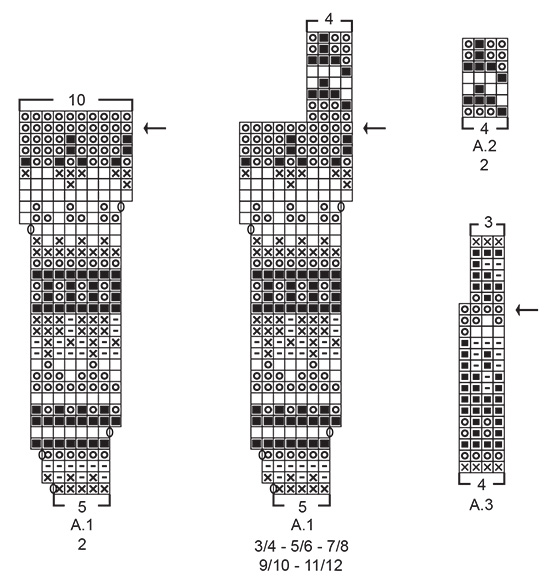
|
||||||||||||||||||||||

|
||||||||||||||||||||||
Dokončili jste tento model?Pak označte své fotky tagem #dropspattern #dalviksweater nebo je pošlete do galerie #dropsfan. Potřebujete s tímto návodem poradit?Otevřete-li si návod na stránce garnstudio.com, najdete tam 28 výukových video-ukázek, Komentáře/Dotazy a další užitečné informace. © 1982-2025 DROPS Design A/S. Vyhrazujeme si veškerá práva. Tento dokument, včetně všech jeho dílčích částí, podléhá autorským právům. Podrobnější komentář k možnostem užití našich návodů najdete dole pod každým návodem na našich stránkách. |
||||||||||||||||||||||







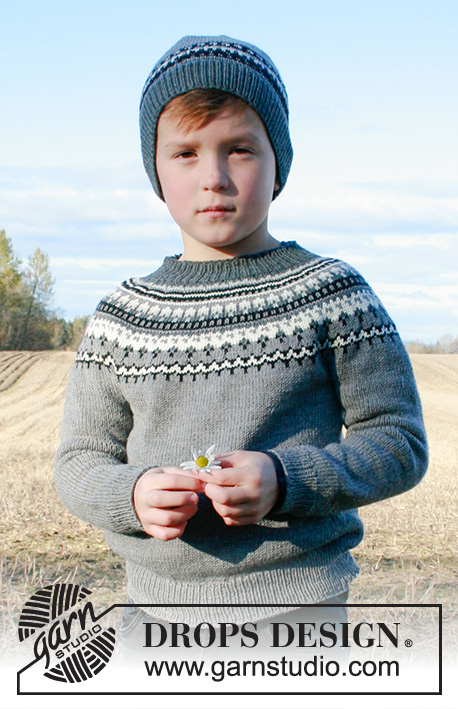
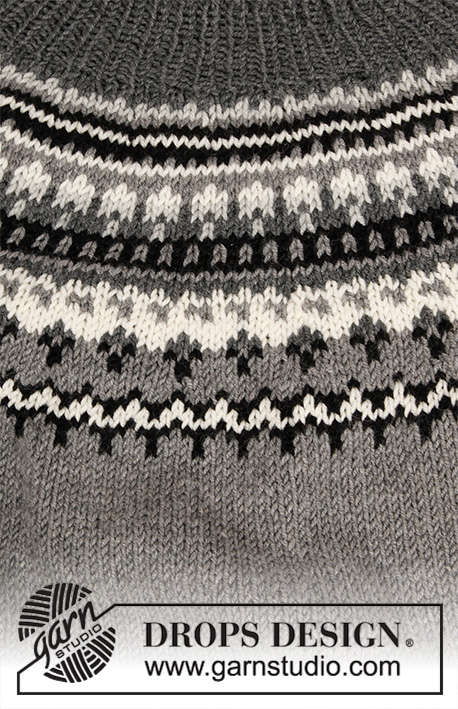

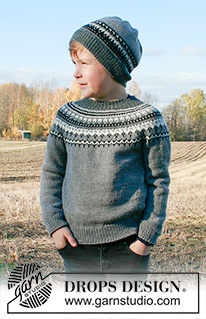
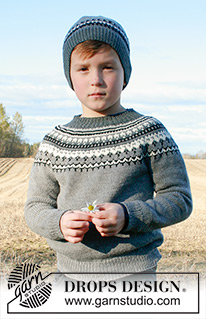
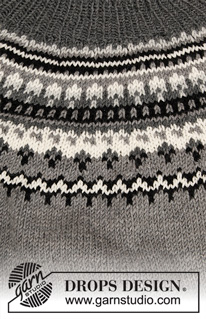

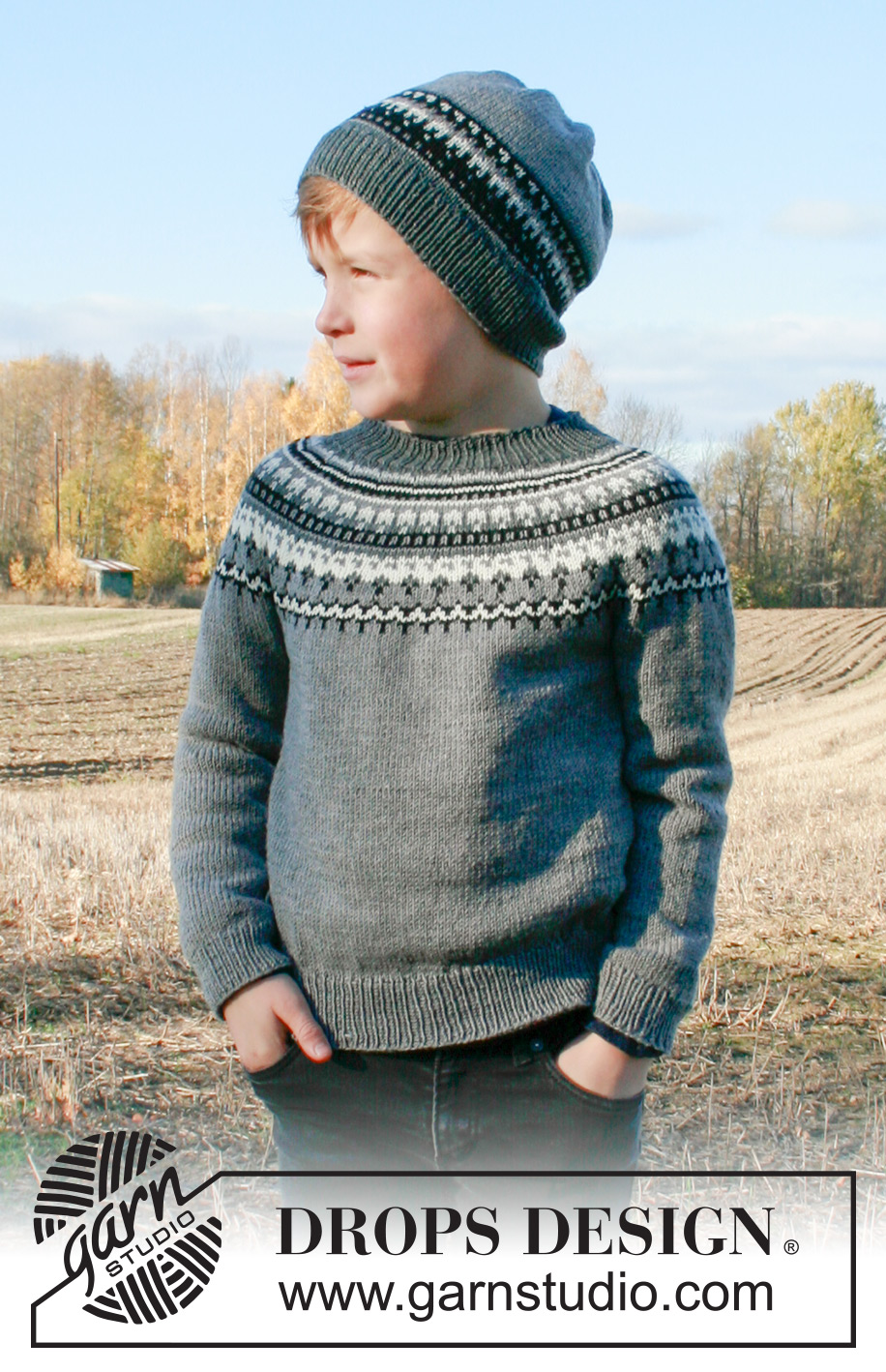
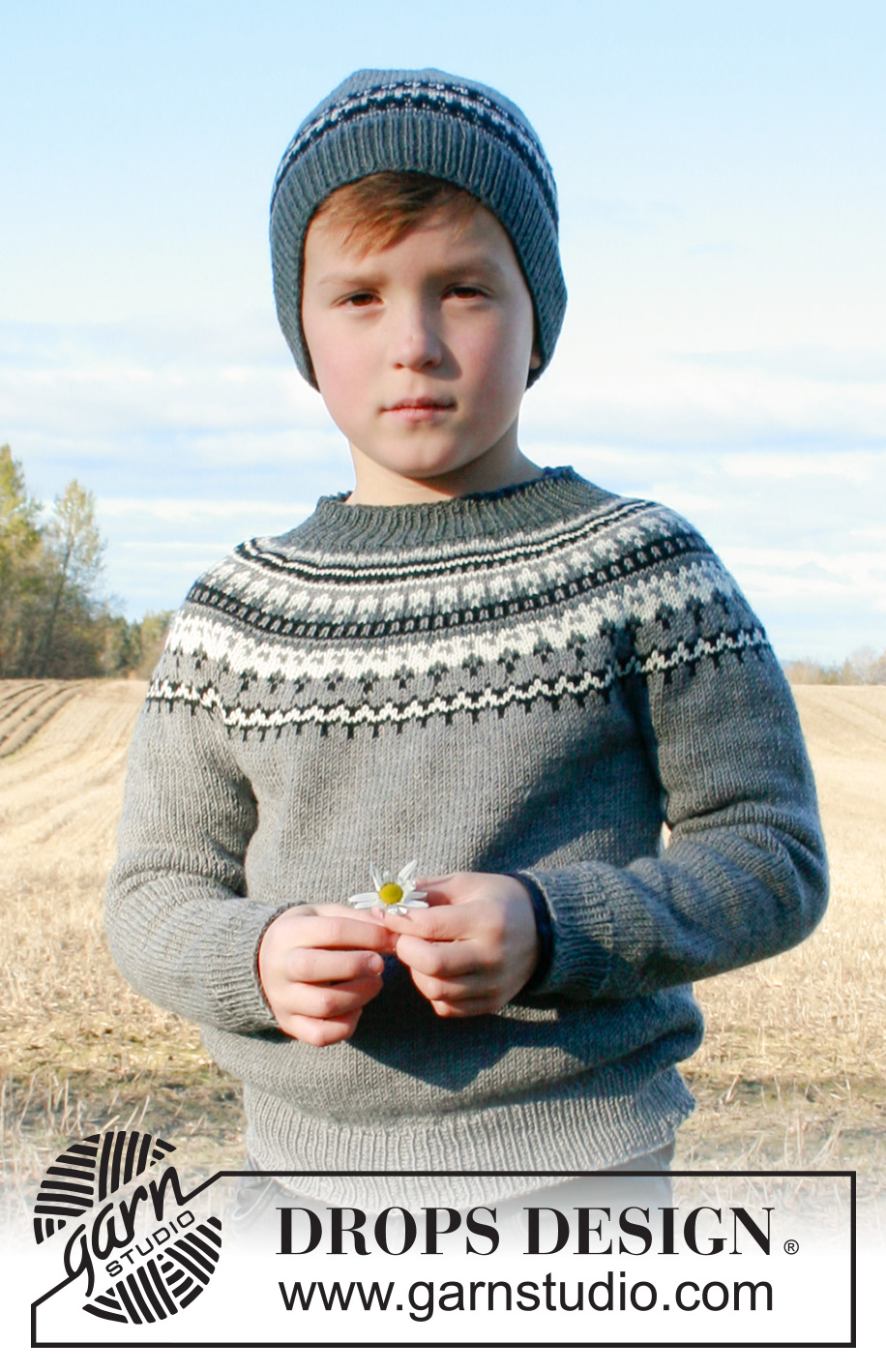




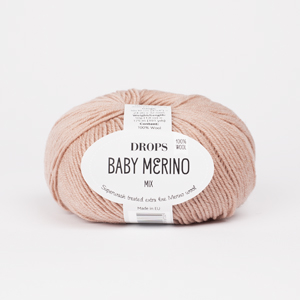
























































Přidejte komentář k návodu DROPS Children 34-18
Rádi bychom věděli, co si o tomto modelu myslíte!
Pokud se chcete na něco zeptat, dbejte prosím na to, abyste ve formuláři níže vybrali správnou kategorii - díky tomu se dříve dozvíte, co potřebujete vědět. Povinná pole jsou označena *.